Central line-associated bloodstream infections and catheter dwell-time

In this manuscript, a clinically useful rule of thumb is derived, stating that the risk of CLABSI increases in a quadratic fashion with the increase in catheter dwell-time” Voets (2018). Abstract: Many clinicians know from experience and medical epidemiological literature that the risk of central line-associated bloodstream infections (CLABSI) increases rapidly with a prolonged catheter […]
Safety of peripherally inserted central venous catheters in acute cardiac care management

In our study, we tested the efficacy and safety of peripherally inserted central catheters to manage cardiac intensive care” Poletti et al (2018). Abstract: PURPOSE: Patients admitted to cardiac intensive care unit need administration of drugs intravenously often in concomitance of therapeutic techniques such as non-invasive ventilation, continuous renal replacement therapy and intra-aortic balloon counterpulsation. […]
Antibiotics at the time of CVC removal for reduction of morbidity and mortality in newborn infants

To determine the efficacy and safety of giving antibiotics at the time of removal of a central venous catheter (CVC) for reduction of morbidity and mortality in newborn infants, in particular effects on late-onset sepsis” McMullan and Gordon (2018). Abstract: BACKGROUND: Late-onset sepsis is associated with increased rates of mortality and morbidity in newborn infants, in addition […]
Retrieval of embolized implantable port catheter fragment

We describe 2 cases of long-term drug catheter (Port-A-Cath) fracture, incidentally documented in a routine chest radiograph” Francisco et al (2018). Abstract: Several types of intravascular devices and catheters are frequently used for long-term drug therapy, especially for oncological patients. As a result, complications are becoming increasingly common, namely catheter embolization. Retrieving these devices is […]
Self-reported occupational blood exposure among paramedics in Poland

There is a further need to improve education among the paramedics concerning the threat of being infected with blood-borne pathogens through all existing routes” Naylor et al (2018). Abstract: INTRODUCTION: Paramedics are at risk of occupational exposure, increased by the immediacy of provided treatment. However, the issue has not been acknowledged by any research in […]
Will routine use of normal saline be replaced with physiologic crystalloid solutions?

It seems likely that normal saline will eventually be abandoned in favor of safer, more physiologic crystalloid solutions in the coming years” Blumberg et al (2018). Abstract: Crystalloid infusion is widely employed in patient care for volume replacement and resuscitation. In the United States the crystalloid of choice is often normal saline. Surgeons and anesthesiologists […]
Electrocardiography-controlled central venous catheter tip positioning in patients with atrial fibrillation

Electrocardiography-guided central venous catheter tip positioning is a feasible real-time method for patients with atrial fibrillation. Combined with ultrasound, the electrocardiography-controlled central venous catheter placement may eliminate the need for postinterventional radiation exposure” Steinhagen et al (2018). Abstract: INTRODUCTION: A significant increase of the p-wave of a real-time intracavitary electrocardiography is a reliable and safe […]
Peripherally inserted central catheters for bone tumor patients

The aim of this study is to explore the related factors affecting infection risk caused by peripherally inserted central catheter (PICC) for bone tumor patients” He et al (2018). Abstract OBJECTIVE: The aim of this study is to explore the related factors affecting infection risk caused by peripherally inserted central catheter (PICC) for bone tumor […]
Review of infections associated with totally implantable venous access devices
This article reviews current evidences in terms of epidemiology, pathogenesis and risk factors, diagnosis, prevention, and treatment of totally implantable venous access device-related infections” Pinelli et al (2018). Abstract: Totally implantable venous access devices, or ports, are essential in the therapeutic management of patients who require long-term intermittent intravenous therapy. Totally implantable venous access devices […]
Assessment of an outpatient antimicrobial therapy program in a rural medical center

This article presents results from a research study that evaluated an OPAT program that treated community-acquired pneumonia” Burkett et al (2018). Abstract: Current literature supports outpatient parenteral antimicrobial therapy (OPAT). This article presents results from a research study that evaluated an OPAT program that treated community-acquired pneumonia. If patients had the opportunity to receive outpatient […]
What is the Epinephrine auto-injector optimal needle length?
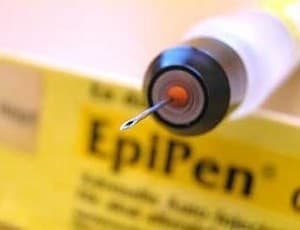
Administration of epinephrine should be intramuscularly in the anterolateral aspect of the thigh. The length of the epinephrine autoinjector, EAI, needle should assure intramuscular injection” Dreborg et al (2018). Abstract: BACKGROUND: Administration of epinephrine should be intramuscularly in the anterolateral aspect of the thigh. The length of the epinephrine autoinjector, EAI, needle should assure intramuscular […]
Factors contributing to infusion phlebitis among adult patients
This descriptive survey identified factors contributing to phlebitis among 46 adult inpatients using a systematic random sample. The visual infusion phlebitis score was used for assessment” Nyika et al (2018). Abstract: This descriptive survey identified factors contributing to phlebitis among 46 adult inpatients using a systematic random sample. The visual infusion phlebitis score was used […]
Methods in reducing the incidence of short peripheral IV catheter-related phlebitis

A randomized trial was carried out to evaluate the effectiveness of 2 treatment methods in reducing the incidence of SPC-related phlebitis” Gunasegaran et al (2018). Abstract: Short peripheral catheter (SPC)-related phlebitis can lead to bloodstream infections and affect patients’ quality of life. A randomized trial was carried out to evaluate the effectiveness of 2 treatment […]
Reducing clinical sepsis in premature infants prior to removal of Peripherally Inserted Central Catheter

We aim to investigate the role of a single prophylactic dose of vancomycin in decreasing the incidence of central line associated bloodstream infection associated with PICC removal” Bhargava et al (2018). Abstract: OBJECTIVE: Peripherally inserted central catheter (PICC) line removal is associated with bloodstream infections and clinical sepsis. We aim to investigate the role of […]
Two approaches for internal jugular venous catheterization under ultrasound guidance

“Syringe-Free” is a new described technique that is performed with oblique long-axis approach. We aimed to compare performance of these two approaches” Ince et al (2018). Abstract: BACKGROUND AND OBJECTIVES: There are different ultrasound probe positions used for internal jugular venous catheter placement. Also, in-plane or out of plane needle approach may be used for […]
Implementation of a blood culture accreditation scheme
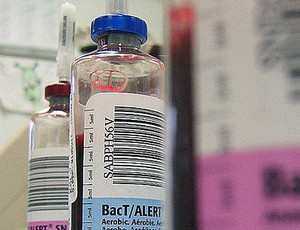
This article is intended to help microbiologists implement blood culture accreditation that is actually beneficial to patient management” Lamy et al (2018). Abstract: Background: Quality assurance and quality management are driving forces for controlling blood culture best practices but should not be disconnected from the end-point target, i.e. patient value. Aims: This article is intended […]
Comparison of complications in midlines versus central venous catheters

With the rising use of midline catheters (MCs), validation of their safety is essential. Our study aimed to evaluate the incidence of bloodstream infections (BSIs) and other complications related to the use of MCs and central venous catheters (CVCs)” Mushtaq et al (2018). Abstract: Background: With the rising use of midline catheters (MCs), validation of […]
Pediatric peripheral IV access algorithm for improving cannulation success

Determine if the pediatric peripheral vascular access algorithm (PPVAA) led to differences in first-attempt and overall peripheral intravenous (PIV) success, staff attempting PIV access per episode and overall attempts and first PIV attempt success by provider” Hartman et al (2018). Abstract: Purpose: Determine if the pediatric peripheral vascular access algorithm (PPVAA) led to differences in […]
Vascular accesses of last resort for renal patients
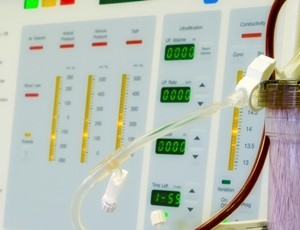
Hence, it is critically important that vascular access options be available to successfully receive renal replacement therapy. This article describes accesses of last resort and provides information vital to nephrologists for discussion with their patients and to surgeons in choosing an optimal option” Vachharajani et al (2018). Abstract: Exhausted vasculature is not uncommon in patients […]
Pediatric blood sampling from existing peripheral intravenous access devices
In an effort to minimize painful procedures, pediatric nursing staff conducted a prospective, observational study to determine if blood sampling using existing PIVs resulted in the loss of the access. The ability to obtain the sample from the PIV was measured along with patient and PIV characteristics” O’Neil et al (2018). Abstract: Purpose: Although pediatric […]
Suitability and safety of intraosseous access blood samples for transfusion

The aim of this study was to assess the feasibility of ABO and D typing and red blood cell alloantibody screening in marrow (BM) samples” Bäckman et al (2018). Abstract BACKGROUND: Blood transfusion through the intraosseous route is gaining popularity in emergency medicine. Pretransfusion peripheral blood (PB) samples are usually not available in these patients, […]
Antimicrobial efficacy of ChloraLock evaluated in this study

The objective of this study was to evaluate the antimicrobial efficacy of ChloraLock with in vitro tests and its ability to reduce Staphylococcus aureus contamination of catheters in the external jugular veins of Yorkshire swine” Kowalewska et al (2018). Abstract: Vascular catheters are a major cause of nosocomial bloodstream infections. ChloraLock (ATTWILL Medical Solutions, Inc, […]
Drug administration via intermittent secondary intravenous infusions
When administering intermittent secondary intravenous infusions, commonly referred to as intravenous piggyback (IVPB) infusions, residual medication remains in the administration set and bag” Thoele et al (2018). Abstract: When administering intermittent secondary intravenous infusions, commonly referred to as intravenous piggyback (IVPB) infusions, residual medication remains in the administration set and bag. No previous studies exist […]
Does a dedicated lumen for parenteral nutrition reduce CRBSI risk?

Publications reviewed by the authors reported comparative rates of catheter-related bloodstream infection (CR-BSI) in patients with CVADs who received PN through a dedicated lumen compared with those who had PN administered through multilumen CVADs” Gavin et al (2018). Abstract: Guidelines recommend using single-lumen central vascular access devices (CVADs) for the administration of parenteral nutrition (PN) […]
Article describes the production of antibodies following blood transfusions
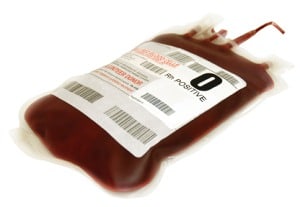
The production of antibodies following blood transfusions is a complex process that involves many recipient and donor factors” Passwater (2018). Abstract: The production of antibodies following blood transfusions is a complex process that involves many recipient and donor factors. Inflammation in the recipient is one important factor. As knowledge of the immune system, of oxygen, […]
Alteplase use in single and double lumen Peripherally Inserted Central Catheters
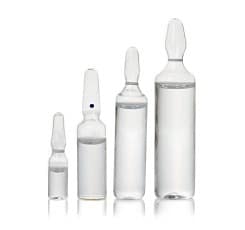
The aim is to review alteplase use as a marker for peripherally inserted central catheter (PICC) occlusions, which may increase risk of CLABSIs. The discovery that alteplase use increased with the number of PICC lumens allowed for exploration of ordering and placement practices” Byrne and Penwarden (2018). Abstract: The purpose of this article is to […]
BSI rates associated with the use of antimicrobial barrier caps compared with disinfecting caps

In a 13-month, prospective, cluster-randomized, open-label trial, we compared BSI rates in facilities using ClearGuard HD antimicrobial barrier caps (ClearGuard group) with those in facilities using Tego hemodialysis connectors plus Curos disinfecting caps (Tego+Curos group)” Brunelli et al (2018). Abstract: Central venous catheters (CVCs) contribute disproportionately to bloodstream infection (BSI) and, by extension, to infection-related […]
Reducing blood culture contamination using a departmental report card

We hypothesized that departmental level feedback could reduce culture contamination at negligible cost, without unfavourable consequences” Zimmerman et al (2018). Abstract: Approximately 50% of positive blood cultures represent contamination [1,2], requiring additional laboratory resources and resulting in unnecessary treatment and hospitalization days, costing approximately $4,385-$8,720 per contamination in the United States [2–4]. Contamination rate feedback […]
Using central venous pressure to guide fluid management?

The central venous pressure (CVP) is the most frequently used variable to guide fluid resuscitation in critically ill patients, although its use has been challenged” De Backer and Vincent (2018). Abstract: The central venous pressure (CVP) is the most frequently used variable to guide fluid resuscitation in critically ill patients, although its use has been […]
Displacement of a power-injectable PICC following computed tomography pulmonary angiogram

We report a case of iatrogenic PICC line displacement following the power injection of contrast during a computed tomography pulmonary angiogram” Lee and Ricketts (2017). Abstract: Displacement of peripherally inserted central catheter (PICC) lines during contrast-enhanced computed tomography examinations is an underappreciated phenomenon. We report a case of iatrogenic PICC line displacement following the power […]

